QuestionQUESTION: Hello. We're back. We're the ones with the crow.
Our little friend is missing feathers, not just on his right leg now but on his bottom side under his leg toward his tail, underneath his wings, and on on the tops of both wings in one small spot you can't see unless you lift his feathers.
We sprayed him today with mite/lice spray for birds but we're wondering if this is indicative of mites. We didn't see any mites or lice on white paper that we laid down underneath him for 24 hours and were told they are so small that we may not be able to see them, so we sprayed.
We're wondering if this sounds like mites or lice AND/OR what are the preliminary signs of metabolic bone disease. The only funky bone things we are seeing are on the tops of his wings but they're equally the same on both sides, just missing feathers.
We have added mealworms and waxworms to his diet. We will be adding fly larvae in two weeks. We got freeze-dried river shrimp to add to his main food (cat food, etc.) but we don't know if it's safe to feed. We got mice but weren't sure if they were safe to feed while he's got this going.
Thank You
ANSWER: Metabolic bone disease restricts a bird's movement. Limbs become distorted and deformed.
A radiograph showing decreased bone density and possible fractures suggest metabolic bone disease. Blood tests showing a low level of calcium and a high level of phosphate confirms the diagnosis. From what you have told me, this condition doesn't seem likely. Again, only a vet can diagnose.
Besides parasites, the bird could have dermatitis, follicularitis, hypothroidism, or some other disorder. If the plucking is by the bird itself, it is a behavioral issue. Crows are very social creatures and as they mature they look to identify with a flock. A captive bird doesn't have one and has to find ways to cope with being alone; often these ways are maladaptive - the reason so many people give up their pet birds. I have seen many many birds in captivity, even in zoos where they get professional care, have patches of missing feathers.
I know the issues, but veterinary tests are needed to rule out physiological problems. Sounds like malnutrition is not the problem.
---------- FOLLOW-UP ----------
QUESTION: Thanks. His movement is not at all restricted.
--Why do you think malnutrition is not the problem? I was under the impression that feather loss in several places indicates possible malnutrition.
--Any recommendations on what to do, aside from taking to the vet, which we cannot do?
--Does this sound like mites/lice?
--I cut down branches from a dead tree that he perches on and that tree was known to have a fungus. A local master gardner told us this would not hurt the bird but... could this be the culprit?
Thank you very much for all your help.
AnswerWith everything you are feeding him/her, I doubt if malnutrition is the problem. That usually only happens when the bird is on a restricted diet. It could be mites or lice but since you didn't find any, that seems not to be the cause. I've never heard of a tree fungus infecting a bird.
I can't give you any accurate advice since the only way to diagnose the bird is for a vet or some other avian expert to look at it. Blood tests are probably in order.
You say his movement is not restricted. But, it is. He's a wild bird confined in a house; it's contrary to his wild state and it is not at all unusual for the bird to act unusually, including picking at his own feathers.
From an avian vet:
Types of Feather Loss
As with different types of molt, there are different types of feather loss. Feathers can be chewed off at the level of skin, chewed off with the downy aftershaft left behind, and chewed at the just the tips; leaving a moth-eaten appearance. Other birds will extract the feathers completely, oftentimes vocalizing painfully during this process. While other birds simply chew, abnormally preen, or fray their plumage.
Feather loss can also occur from wear and tear, structural damage to the feather from infectious causes, barbering by cagemates, and cage trauma. Parasites cause feather breakage or rubbing of the plumage and skin, which also breaks the plumage.
Causes of Feather Loss
To successfully treat a bird with feather loss, it is important to identify the cause. This often necessitates diagnostic tests to confirm or rule-out disease syndromes and to confirm health of the patient.
Viruses- The two most common viral causes are Psittacine Beak and Feather Disease and Polyomavirus.
Parasites- Contrary to public opinion, parasites are rarely a cause for feather loss. Red mites, feather mites and lice are occasional causes. Brotogerid parakeets often get a Myalges sp. mite which causes feather loss on their forehead. Giardia protozoa have been implicated in causing itchy skin but probably do not contribute significantly to feather loss or damage.
Bacteria/Fungi- Both types of organisms are common causes of follicle infection and usually respond well to medication.
Nutrition- Malnutrition is still a cause for feather abnormalities. Fortunately, a thorough history of the diet and close examination often give telltale clues.
Barbering-- Cagemates frequently pick feathers of birds housed with them.
Behavior- Many factors contribute to behavioral feather loss: sexual frustration, dominance, boredom, territoriality, obsessive compulsive behaviors, predator stress from household pets, lack of parental training for grooming, etc.
Physical- Organ disease such as liver damage, kidney failure, tumors, respiratory infection and other infections contribute to stress-induced feather loss.
Other Causes- Irritants such as insect bites, tonics applied to the plumage, ointments, improperly trimmed flight feathers, etc. can initiate chewing.
Best wishes

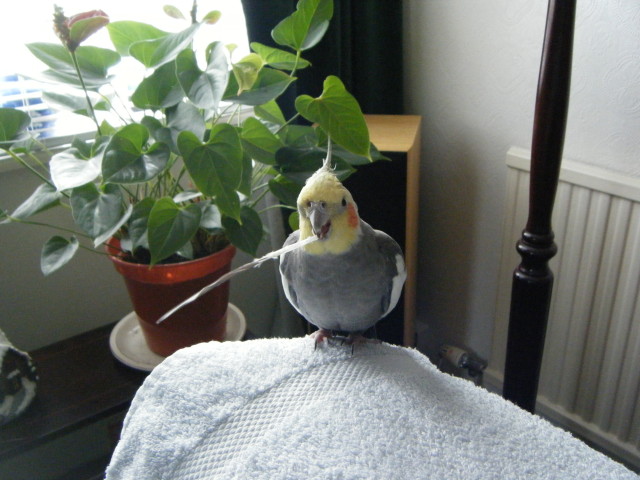 boris the cockatiel
Question
boris
Hello , I have a male cockatiel called b
boris the cockatiel
Question
boris
Hello , I have a male cockatiel called b
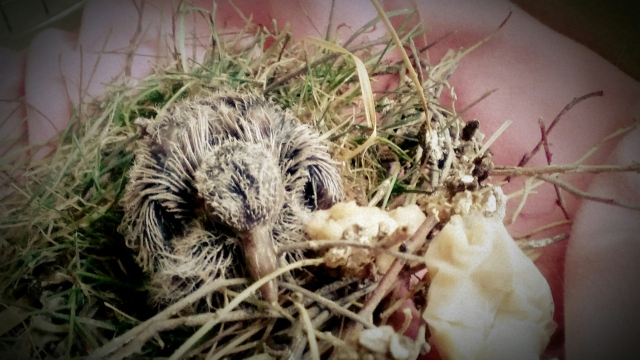 Baby Dove Care
Question
Baby Bird 1 Baby Bird 2
Hello, to
Baby Dove Care
Question
Baby Bird 1 Baby Bird 2
Hello, to
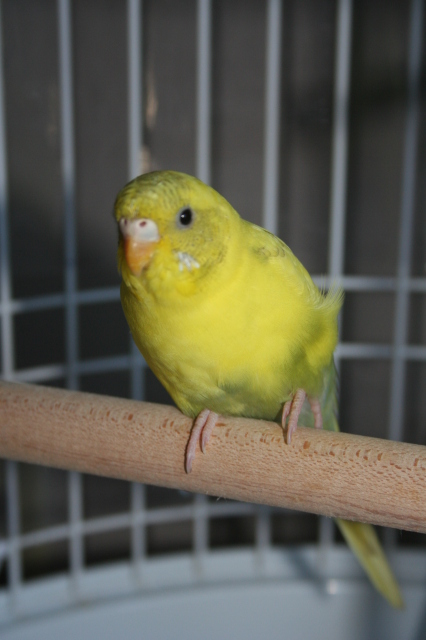 Budgie has broken foot?
Question
Maggies foot
Hi there! I got a baby budgie a f
Budgie has broken foot?
Question
Maggies foot
Hi there! I got a baby budgie a f
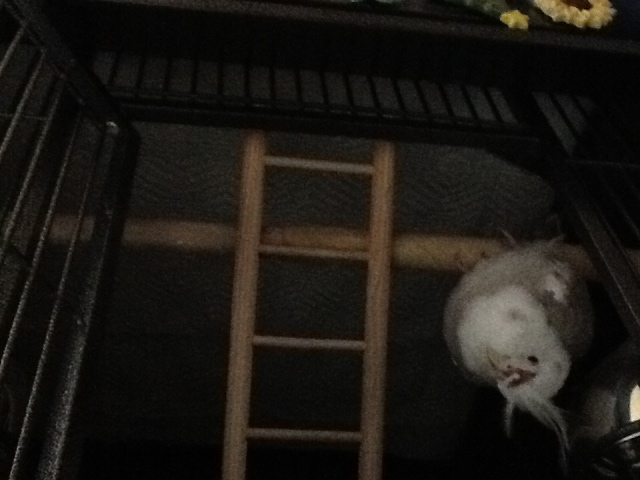 White faced cockatiel injury
Question
cockatiel injury
My 8 year old cockatie
White faced cockatiel injury
Question
cockatiel injury
My 8 year old cockatie
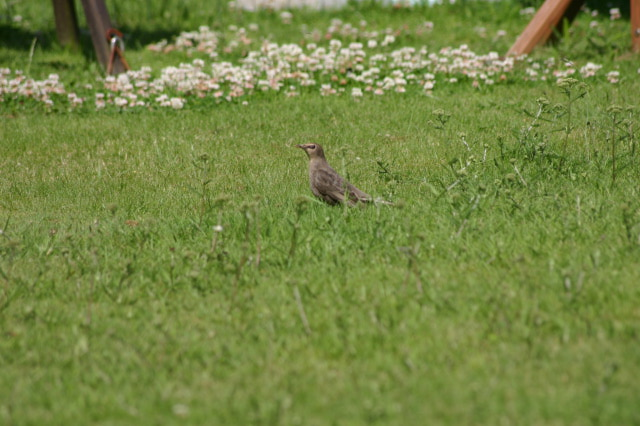 Identification of a bird
Question
Bird name
Please can you advise what th
Identification of a bird
Question
Bird name
Please can you advise what th